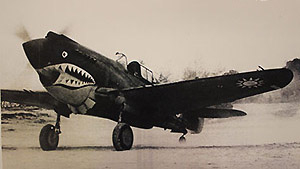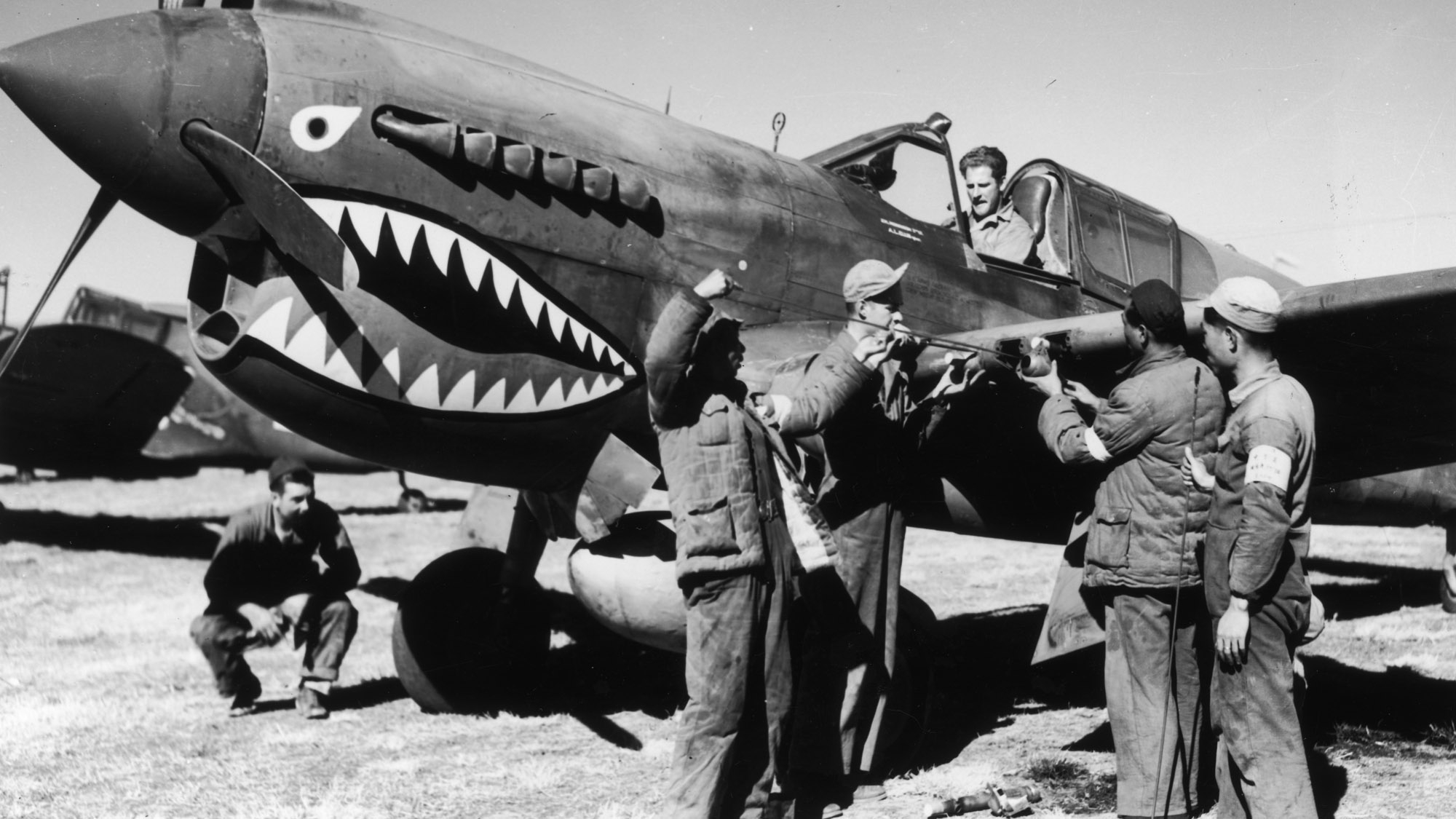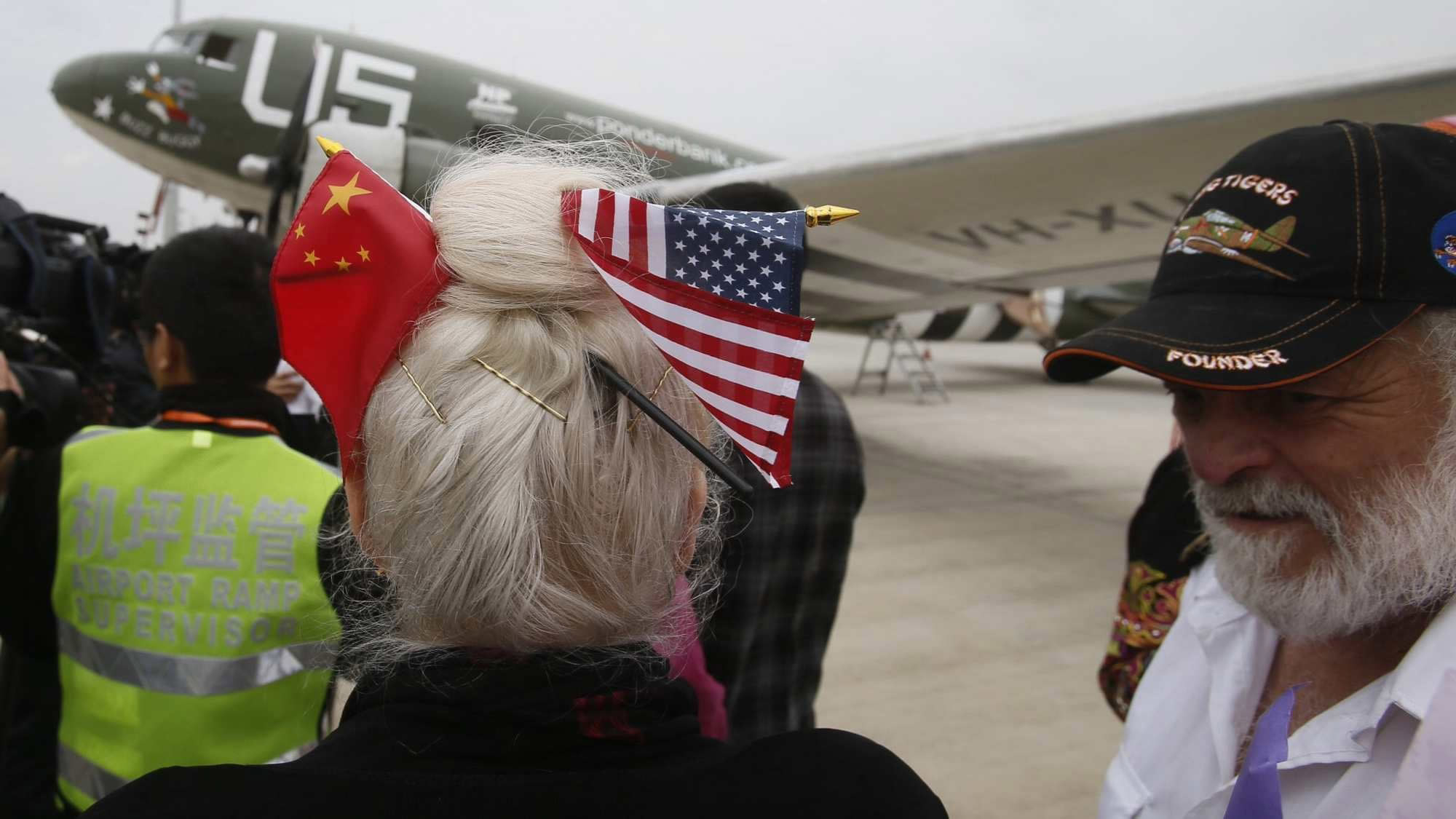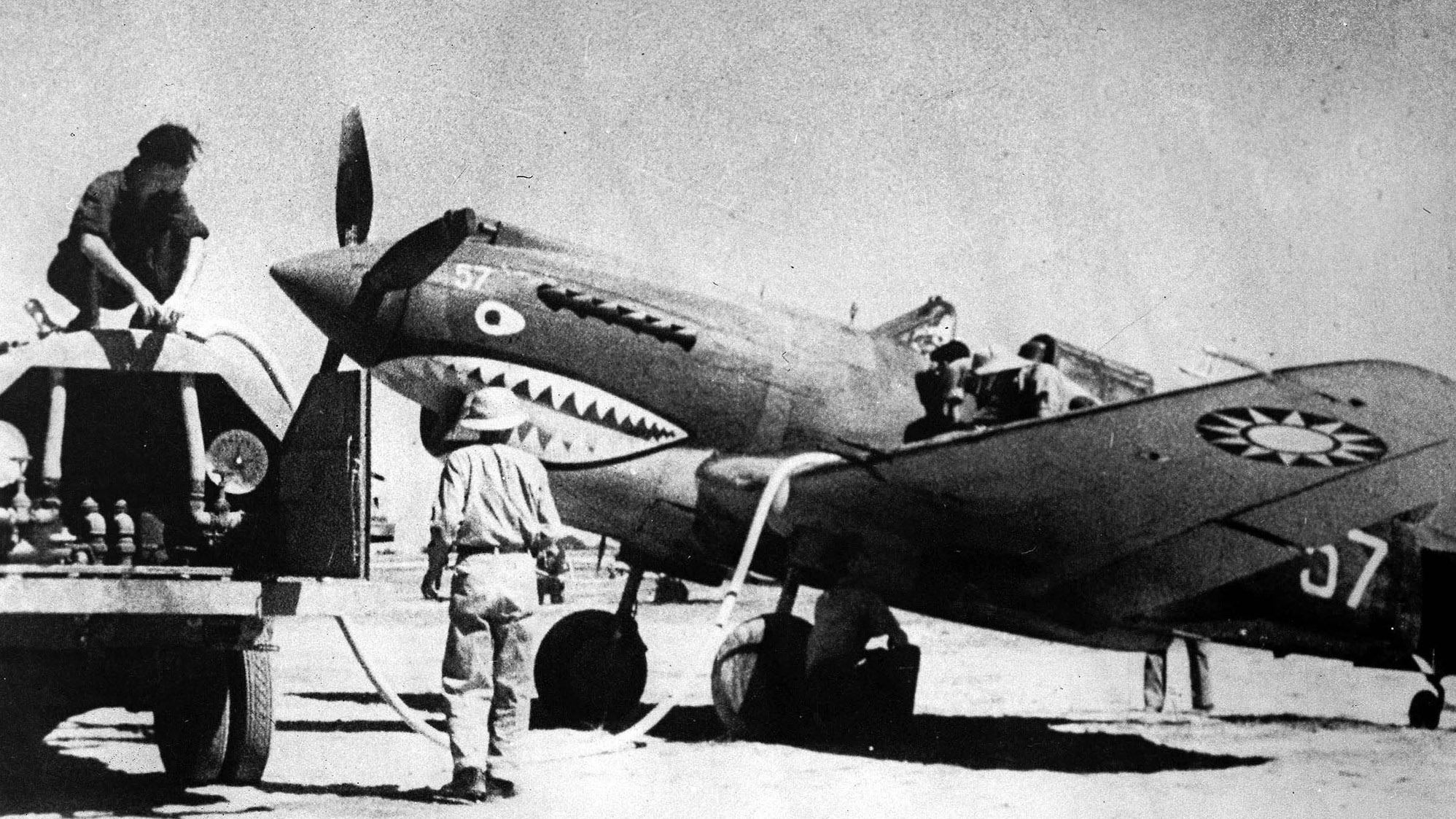
TV Show
23:03, 06-May-2019
Flying Tigers, the unforgotten China-U.S. alliance in WWII
Updated
11:18, 07-May-2019
Dialogue with Yang Rui
01:05

China and the United States were once allies in common cause against Japanese aggression during the Second World War (WWII). Their most famous fighting force was formed by Chinese soldiers and American volunteers: The Flying Tigers or the American Volunteer Group (AVG) led by General Claire Chennault, harassed the Japanese forces from the air from August 1941 to July 1942 in the allied Chinese battlefield.
During the China-U.S. alliance, flying over the Hump proved to be an extremely hazardous undertaking for Allied flight crews. The air route wound its way into the high mountains and deep gorges between northern Myanmar and southwestern China, where violent turbulence, 125 to 200 mph (320 km/h) winds, icing, and inclement weather conditions were a regular occurrence.
According to official records, the U.S. army provided 650,000 tons of aerial supply to China from April 1942 to August 1945. A total of 468 aircraft crashed along the Hump route with 1,314 crew members confirmed dead, 1,171 returning safely, and another 345 declared missing.
How should we understand the legacies of the Flying Tigers in time of peace? And what are the lessons for today's China-U.S. relationship?
"Safe in the hands of friends." It is a sentence inscribe on a statue in the museum to commemorate the heroic achievement by the Flying Tigers under the China-U.S. alliances against Japanese invasion. Larry Jobe, president of American Flying Tiger Historical Organization and a former pilot from the United Airlines, said during an interview with Dialogue.
"If you were pilot of Flying Tigers shoot down over enemy territory and Chinese pick you up, you had a 95 percent chance of getting back to your base alive. That was almost a guarantee. You have to understand that Japanese troops offer rewards for these pilots. The Japanese would come to villages to torture and kill people trying to find out where these pilots were. However, Chinese people protect and brought these pilots back to base. That kind of help was invaluable. A fighter pilot taking off to do a battle would be comfortable by the fact that he knows if he goes down, he will have people and friends to help," added Jobe.
The high mortality of the Flying Tigers in the Hump route and fighting against Japanese aggression is another unforgotten history between China and the U.S. But what is behind that history?
00:39

"I believe you are referring the Hump pilots killed. There were many reasons for that. First of all, the aircraft was not capable enough to fly over terrains. So they had to fly through passes rather than over the mountains," Jobe said.
"Weather reporting was back then, navigation system was very poor and aircraft often overloaded at many times. So all these factors contributed to a very high accident rate plus the fact that they had to fly through passes to avoid Japanese air forces find[ing] them and shoot[ing] them down. These cargo plans were unarmed," Jobe added.
00:32

"It is very important to recall history and had it available for people to look into the future. When I was in Asia in 1995, Japanese had just published textbooks painted Japanese army in WWII as an army of liberation for their high school students. The point is that they want to rewrite the history. We need that history to be recalled," emphasized Jobe.
"If you don't remember and record the history, you will not have a bright future," said Kuan Chi Ma, vice president of the American Flying Tiger Historical Organization. Previously, some Japanese politicians visited him in San Francisco and asked him to talk more about the future instead of talking too much about Japanese invasion history.
Remembering history could help us to navigate a healthy relationship in the future.
01:14

Kuan Chi Ma said that the China-U.S. relationship goes like a roller-coaster with ups and downs. But every time, we came to a new stage after the storm.
"Difference is nature, but common ground would be recognized by everybody. The Flying Tiger is one of the common grounds for Rose Garden in the U.S. and the Great Hall of the People in China. We would like to cherish the spirit of the Flying Tiger for mutual respect, sacrifice, dedication and mutual understanding. To find a common ground and the two great nations will have a brighter future," Kuan Chi Ma added.
(If you want to contribute and have specific expertise, please contact us at opinions@cgtn.com.)

SITEMAP
Copyright © 2018 CGTN. Beijing ICP prepared NO.16065310-3
Copyright © 2018 CGTN. Beijing ICP prepared NO.16065310-3